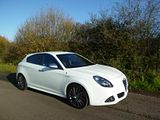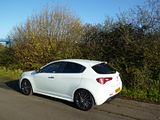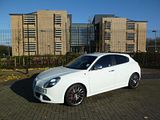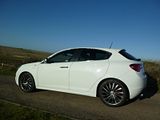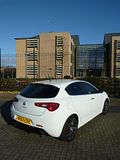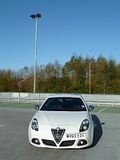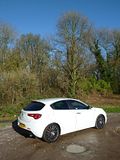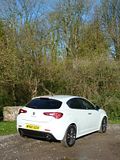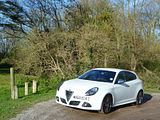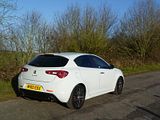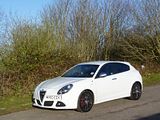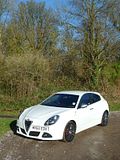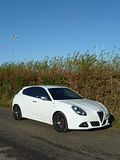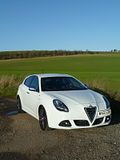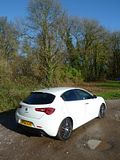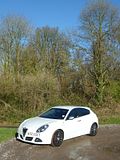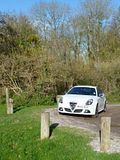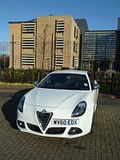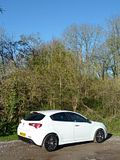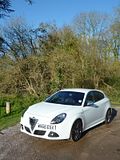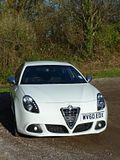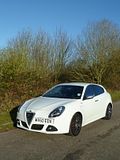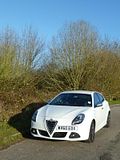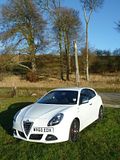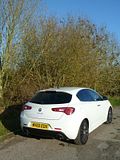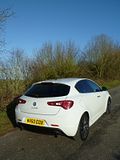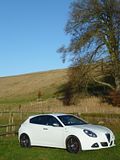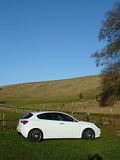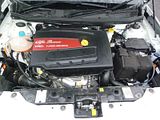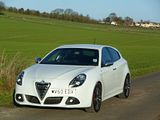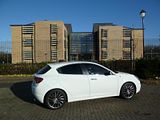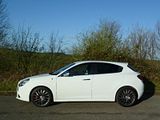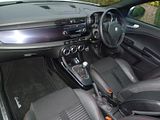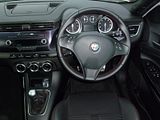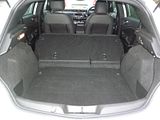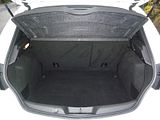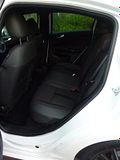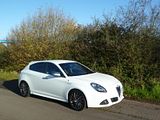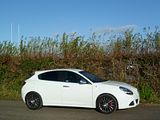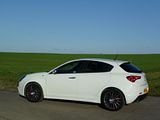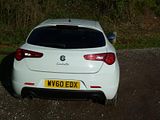There can be few marques which generate more debate than Alfa Romeo. We saw that not just during the Centenary celebrations in 2010 but whenever any significant new car is announced, or a major news item breaks. For every fan – of which there many – there are also plenty of people who either would love to love the cars but who find something about the vehicle to preclude them from so doing and those who express what appears to be blind prejudice against the marque. Brand loyalty is all very well, but in this day and age, it is brand sales that are needed, and that is where Alfa Romeo continues to struggle. After the little AlfaSud did so much in the 1970s to open up ownership of the marque to far more people than ever before, and then blew their confidence with its propensity to dissolve even faster than other rust buckets of the period, Alfa has found it difficult to get all the formula right again. Certainly offerings in the 1980s veered to the quirky side, with cars such as the 33 and the 75 never really hitting the mark. The 1990s were more promising, as the high end 164 was definitely an excellent car, but it was never going to be a volume product, and the modifications made to the mid-sized 155 did turn the proverbial sow’s ear into a relative silk purse, though by then too few people even looked. Then what looked like a sure fire winner was launched: the 156 was deserved Car of the Year, for as well as looking stunning, the press at the time all enthused as to how it beat the 3 Series, for a while at least. Two years later and in the class below, the 147 repeated the same trick, of stunning looks and it achieved a Car of the Year award as well. But the sales did not follow, and the ill-fated venture with GM which led to the overweight platform that sat under the 159 and Brera as well as keeping the 147 in production for far too long meant that by the late Noughties, Alfa yet again looked to be in trouble. MiTo was clearly going to help, but it was the C-Segment car that was so badly needed, and early spy pictures of a Fiat Bravo with an Alfa grille on it were not terribly encouraging. When Giulietta, as the car was christened following a last minute change of name, finally appeared late in 2009, though, all those who get excited about a new Alfa did so all over again. Here was a car which many would assert is by some measure the best looking in its class, boasting some excellent emissions figures and which, when the press got to drive it, received excellent reviews. Potentially then, Giulietta is the best chance Alfa have at the renaissance they so desperately need. As a confirmed Alfa enthusiast, it was a car that instantly went pretty high on my list of “things to try”. It’s taken a while, but finally I have been behind the wheel.
Judging by the number of Giuliettas that you now see on the roads – and with very distinctive rear lights like a quaver on their side, which when lit up could never been mistaken for anything else – the car is proving quite popular. In these eco-conscious times, it is the less potent cars that have captured all the attention, and unsurprisingly, as the 1.4 petrol engines and 1.6 and 2.0 diesel engines are well up to par. However, there is one model which intrigues more than all the others, and that is the top of the range car, badged Cloverleaf and fitted with Alfa’s much praised 1750 TBi engine. That is the one that was delivered to me to try out, and I was excited, for obvious reasons. Even allowing for the ever increasing weight of modern bolides, 235 bhp in a car the size of the Giulietta should endow it with a lively performance. Start the car up – all done using a conventional key in an ignition key slot – and pull away gently and you begin to wonder, as the car does not feel that special. Sadly, it does not sound special, either, in a way that not just the characteristic flat 4 engine in the ‘Sud and 33 user to, but also the old Twin Spark powerplants that featured in the 145/146 antecedents – with no distinctive sound at all. It was only when I came to a nicely empty motorway sliproad when I pushed harder on the throttle that the Cloverleaf came alive, and convinced me that this indeed a brisk car.
There is another trick available, too, the secret for which lies the other side of the DNA switch. Push it forward to activate “dynamic” and everything changes. Not only does the steering feel sharper, but so does the throttle and the whole car rockets away, as the overboost becomes available and the Q2 differential allows for corners to be taken that bit faster. Before trying it, I was sceptical that this could be a bit of a marketing gimmick, but having experienced the difference, I can assure that it really does change things. The “A” part of DNA is for All-Weather and in this mode, all the electronic safety systems are alerted with the engine response being controlled to minimise the risk of skidding if the cars senses this is likely. Stop/Start features on most models in the Giulietta range, but is not part of the Cloverleaf. Even so, the car delivers impressive fuel economy, and I averaged 37 mpg for the weekend of my tenure, which comprised a mixture of motorway journeys, cross country roads and urban driving. The gearchange in this car was very good, with a very clean positive movement between all six forward gears, and easy selection of reverse. Although the gear knob looks metal, which is not always ideal in very cold or very hot conditions, it is in fact plastic. One driving characteristic that Alfa introduced with the 155 was a really quick steering rack, with less than 2 turns from lock to lock. The Giulietta’s steering is not quite like this, but then this also means that it does not suffer from the truly challenging turning circle that afflicted the 155s and 156s. The steering is well weighted and offers plenty of feel, though it does not quite achieve the highest standards of pre-current Focus. Handling is good, too, with no body roll, and no trace of understeer or torque steer, largely thanks to the Q2 differential. Despite the large wheels, the Giulietta rides well, and it also stops well. Alfa have not been tempted to follow modern practice, so there is still a proper pull-up handbrake between the seats. There were no visibility issues, with a good field of vision from the mirrors and the car was easy to manoeuvre in tight car parks.
When the first right hand drive cars hit the press, there were plenty of complaints about a flawed conversion, and the absence not just of a foot rest, but of anywhere to put the left foot when it was not on the clutch pedal. This was disappointing to read, but like everything these days, is something to judge for yourself, to assess whether it is a serious demerit or not. It is true that there is no footrest, but the problem is not so much where you put your left foot, as there is actually a certain amount of room to the left of the clutch pedal, but there is an issue caused by the large and off-centre console moulding which does have rather too intimate a proximity to you left shin. Was it a deal breaker? Probably no, but it was not ideal, and for those with far longer legs than me, I can see that it just might be. That would be a shame, as I think in all other respects, Alfa have eradicated the other characteristics of the driving position which have not infrequently drawn criticism in the past. The seat has plenty of adjustment on it, and I was quite surprised to find that I did not need it on its very lowest setting, which is unusual for me. The backrest angle adjuster was quite well hidden, buried well back, and not easy to reach behind the seat belt webbing, but once the adjustments were made, the seat was comfortable, and with rake and reach adjustment on the steering column, I could easily achieve the perfect driving position. There was one further disappointment, though: the main instrument dials are set quite a long way apart, with the result that the speedo is well to the left, with the vital markings that pertain to the speed limits proving partially obscured by the steering wheel, and not easy to read at a glance. With markings only in even increments of 20, this did not help to judge the vital 30 and 50 mph that you need to be able to do, to stay away from the attentions of speed cameras. Deeply dished and in individual cowls under the overall twin humped cowl of the binnacle in a style reminiscent of previous Alfas, the larger dials of the speedo and rev counter (or “giri” as it is marked) are complemented with a fuel gauge and water temperature gauge, and a display area beneath them which shows odometer, trip mileage, a discrete gear change up arrow and other warning displays. The main dash panel has a sizeable trim insert which in this model is finished in a dark brushed aluminium, which along with the black seats makes the interior a little sombre. Mounted in the middle of this is the audio unit which has three rotary dials and a series of much smaller buttons which proved a bit fiddly to use, though some of the functions are repeated with further buttons set into the spokes of the steering wheel. A series of stylised toggle switches are under the audio unit and then on a pod above the stowage area in front of the gearlever you will find three large rotary dials for the climate control, where just the outer sleeve of the dial turns. Chunky column stalks operate indicators, wipers and lights. It is all very conventional and shows none of the zany thinking as has sometimes been manifest, such as the heater fan that was on the end of the indicator stalk in the AlfaSud.
Considering the relatively compact overall size of the Giulietta, the packaging is quite well handled, with a decent amount of space in the car. The back seats are generously proportioned for two, and three adults could certainly fit without experiencing undue discomfort. Even with the front seat set well back, there is still some legroom, and headroom is good, too. The boot is class competitive in size, and is a regular rectangular shape, with a bit of room for small odds and ends to tuck around the space saver located under the boot floor. The rear seats are asymmetrically split and the backrests simply drop down onto the cushion, creating a much longer platform albeit one that sloped upwards slightly. The passenger cabin is not that well endowed with oddments space, with a moderate glove box, reasonable door pockets and a cubby under the central armrest augmented in cars that lack the factory satellite navigation system with another lidded stowage area on the top of the dash.
The Cloverleaf is the top model in the Giulietta range, but even so, I would not describe it as lavishly equipped. Aside from the different engine and badging, for your £25,000, it comes with its own unique 18″ alloy wheel design, the visibility pack (which includes auto sensing lights and wipers and a polychromatic rearview mirror), lowered sports suspension, red brake calipers, and the iconic green four leafed clover badge on the wings. Standard seat covering is a mixture of leather and microfibre cloth which looks good, though you can opt at extra cost for full leather in red or black. If you like black, that’s good for the external paint, too, otherwise any other shade even the white of the test car will cost extra as will Alfa Red, at £450, or if you are feeling particularly indulgent, 8C Red which is much pricier at £1850. A leather trimmed steering wheel, drilled aluminium pedals, cruise control, dual zone automated climate control, Blue & Me connectivity with a USB port and front fog lights are also part of the standard package as they are on the lesser Lusso and Veloce models. Options are confined to metallic paint, a sun roof, different wheels, various packages for electric adjustment of the seats, an upgraded Bose Hi-Fi system and satellite navigation.
My expectations were very high for this car. Although not a fan of the particular wheels fitted, in all other respects, I think it looks good, and as a confirmed Alfa enthusiast, I was hoping that one of their products which appears to have passed muster even with those not renowned for their love of the brand, I expected it to drive it well. It did, and yet I still felt a tinge of disappointment. Aside from the couple of ergonomic niggles cited above, there was no real weakness at all, so why did not stun me? I fear that in trying to increase the mass market appeal, a trend that started with the 159, Alfa have somehow managed to dilute that special “Alfa-ness” that people either loved or hated. Whilst this may make for a commercially more broadly appealing product, it does mean that something has been lost. Gone, perhaps are the days when you bought into “Cuore Sportivo” with your heart and ignored whatever the head was saying. Now, you can have an Alfa based on what the head says, even if the heart just feels a little less emotional about it all. If that helps to keep the brand alive, then I suppose I should welcome it, but as someone who has loved almost everything that this 101 year marque has ever made, it is just a little disappointing.


